Contents
Guide
Page List
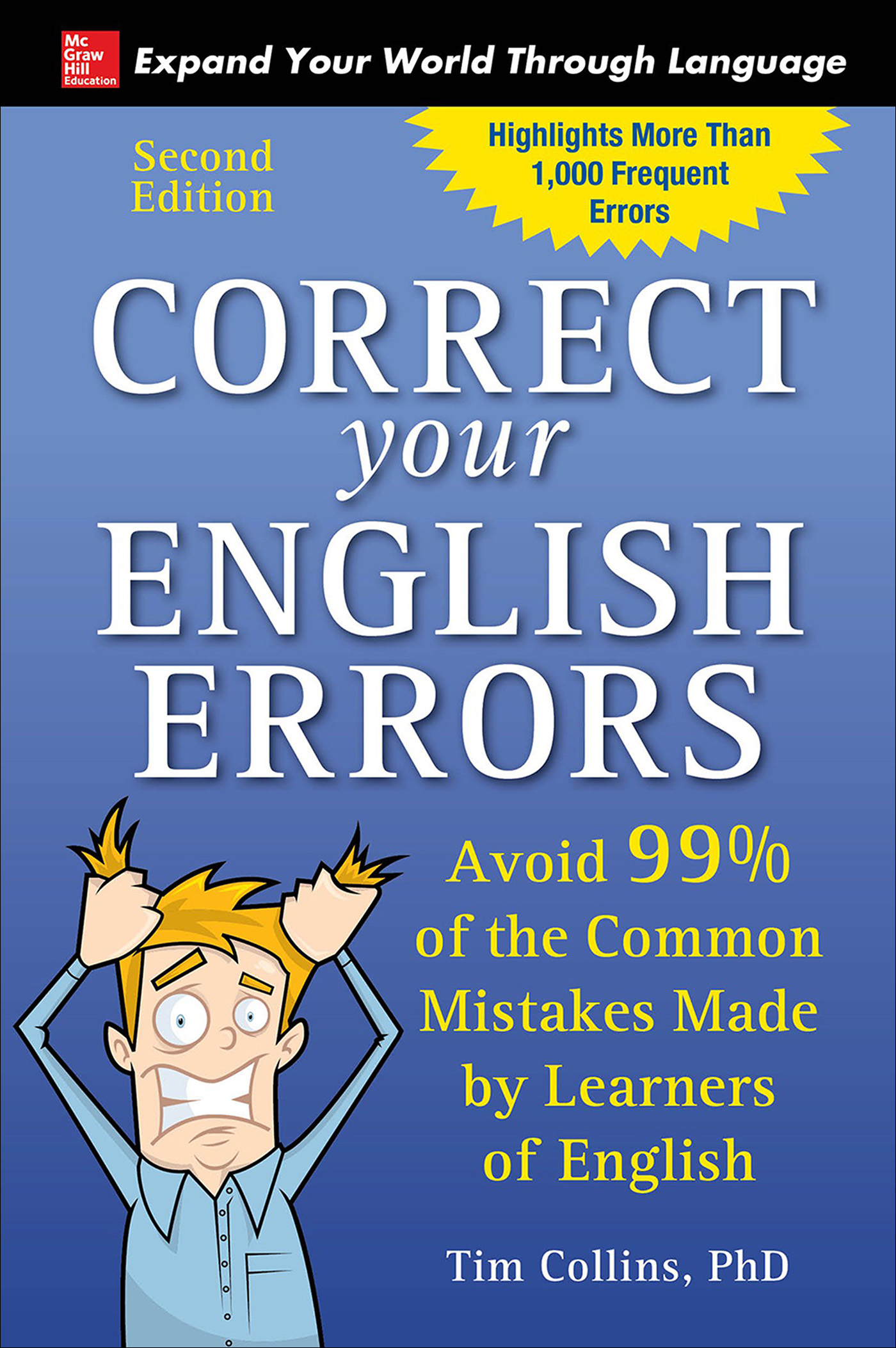

Copyright 2018 by Tim Collins. All rights reserved. Printed in the United States of America. Except as permitted under the United States Copyright Act of 1976, no part of this publication may be reproduced or distributed in any form or by any means, or stored in a database or retrieval system, without the prior written permission of the publisher. ISBN: 978-1-26-001922-3
MHID: 1-26-001922-5 The material in this eBook also appears in the print version of this title: ISBN: 978-1-26-001921-6, MHID: 1-26-001921-7. eBook conversion by codeMantra
Version 1.0 All trademarks are trademarks of their respective owners.
Rather than put a trademark symbol after every occurrence of a trademarked name, we use names in an editorial fashion only, and to the benefit of the trademark owner, with no intention of infringement of the trademark. Where such designations appear in this book, they have been printed with initial caps. McGraw-Hill Education eBooks are available at special quantity discounts to use as premiums and sales promotions or for use in corporate training programs. To contact a representative, please visit the Contact Us page at www.mhprofessional.com. TERMS OF USE This is a copyrighted work and McGraw-Hill Education and its licensors reserve all rights in and to the work. Use of this work is subject to these terms.
Except as permitted under the Copyright Act of 1976 and the right to store and retrieve one copy of the work, you may not decompile, disassemble, reverse engineer, reproduce, modify, create derivative works based upon, transmit, distribute, disseminate, sell, publish or sublicense the work or any part of it without McGraw-Hill Educations prior consent. You may use the work for your own noncommercial and personal use; any other use of the work is strictly prohibited. Your right to use the work may be terminated if you fail to comply with these terms. THE WORK IS PROVIDED AS IS. McGRAW-HILL EDUCATION AND ITS LICENSORS MAKE NO GUARANTEES OR WARRANTIES AS TO THE ACCURACY, ADEQUACY OR COMPLETENESS OF OR RESULTS TO BE OBTAINED FROM USING THE WORK, INCLUDING ANY INFORMATION THAT CAN BE ACCESSED THROUGH THE WORK VIA HYPERLINK OR OTHERWISE, AND EXPRESSLY DISCLAIM ANY WARRANTY, EXPRESS OR IMPLIED, INCLUDING BUT NOT LIMITED TO IMPLIED WARRANTIES OF MERCHANTABILITY OR FITNESS FOR A PARTICULAR PURPOSE. McGraw-Hill Education and its licensors do not warrant or guarantee that the functions contained in the work will meet your requirements or that its operation will be uninterrupted or error free.
Neither McGraw-Hill Education nor its licensors shall be liable to you or anyone else for any inaccuracy, error or omission, regardless of cause, in the work or for any damages resulting therefrom. McGraw-Hill Education has no responsibility for the content of any information accessed through the work. Under no circumstances shall McGraw-Hill Education and/or its licensors be liable for any indirect, incidental, special, punitive, consequential or similar damages that result from the use of or inability to use the work, even if any of them has been advised of the possibility of such damages. This limitation of liability shall apply to any claim or cause whatsoever whether such claim or cause arises in contract, tort or otherwise.
CONTENTS
INTRODUCTION
The purpose of this book is to identify the most common trouble spots for English language learners, to provide a basis for understanding why these trouble spots cause difficulties, and to offer guidance and practice for avoiding potential errors. Many errors commonly made by speakers and learners of a second language are caused by transferring patterns and features of the native language to the new language.
This happens in all aspects of language from pronunciation to word formation to sentence structure:  Difficulty saying an English sound arises because the first language does not have such a sound.
Difficulty saying an English sound arises because the first language does not have such a sound.  Double letters are omitted from English words because the first languages spelling system does not have double letters.
Double letters are omitted from English words because the first languages spelling system does not have double letters.  Verb endings to show tense or noun endings to show plurals are omitted because the first language does not add such suffixes to these words.
Verb endings to show tense or noun endings to show plurals are omitted because the first language does not add such suffixes to these words.  Adjectives are placed after, rather than before, nouns because the first language follows that pattern.
Adjectives are placed after, rather than before, nouns because the first language follows that pattern.  Taller from is said instead of taller than because thats the pattern in the first language. Another source of error is the learning process itself.
Taller from is said instead of taller than because thats the pattern in the first language. Another source of error is the learning process itself.
That is, learners tend to overapply or misapply patterns and rules in the new language, do not learn exceptions to the rules, or do not apply the rules fully. Here are examples of these kinds of errors:  Applying the regular -ed past-tense ending to irregular verbs: I goed home early yesterday.
Applying the regular -ed past-tense ending to irregular verbs: I goed home early yesterday.  Using more with the adjective heavy (which requires the -er ending) because the rule that two-syllable adjectives ending in -y use -er, not more, was not fully learned.
Using more with the adjective heavy (which requires the -er ending) because the rule that two-syllable adjectives ending in -y use -er, not more, was not fully learned.  Using asleep in front of a noun because the rule that a certain small group of adjectives, including asleep, are used only after a linking verb was not fully learned. In this book, you will find help with these and many more common errors through explanation and example. You will become aware of potential trouble spots and learn how to break the habits, learn the necessary rules, and correct your mistakes.
Using asleep in front of a noun because the rule that a certain small group of adjectives, including asleep, are used only after a linking verb was not fully learned. In this book, you will find help with these and many more common errors through explanation and example. You will become aware of potential trouble spots and learn how to break the habits, learn the necessary rules, and correct your mistakes.
Several examples are given for each topic, followed by exercises that test your understanding and help you avoid the pitfalls. This book is divided into two parts: Pronunciation and Spelling and Grammar. The largest section is Grammar, which identifies the various parts of speech in traditional terminology for ease of comprehension. Each term is explained and illustrated with multiple examples, providing necessary review or clarification. Throughout this book, all errors are presented in red type and marked by an  . For maximum clarity, all errors are corrected, and each corrected version is presented with a
. For maximum clarity, all errors are corrected, and each corrected version is presented with a  .
.
The guidelines in this book are based on current standard usage in North America. However, usage varies according to region and other variables, and language is constantly changing. In cases where variants exist for formal and informal situations, details are provided. Because individual words of a language are used in connection with other words, you will find that many topics are mentioned in more than one place. Extensive cross-referencing will help you find connections between related topics. Topics and lists are presented in logical order.
For example, irregular verbs are presented in groups of verbs that follow similar patterns. Comparative and superlative forms of adjectives are presented in logical groupings according to how they are formed and spelled. Verb tenses are presented in order from the present tense to modal verbs. Complex syntactic patterns, such as the passive voice, are presented at the end of the volume, after all the prerequisite knowledge has been presented. In addition, the back of the book includes a comprehensive and detailed index, which serves as a guide to locating all the references to each topic, as well as a key with the answers to all the exercises.


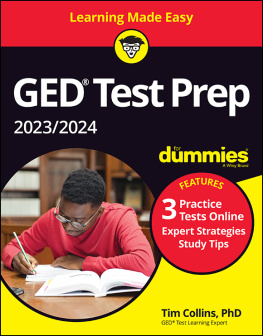


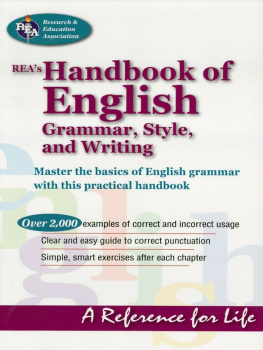

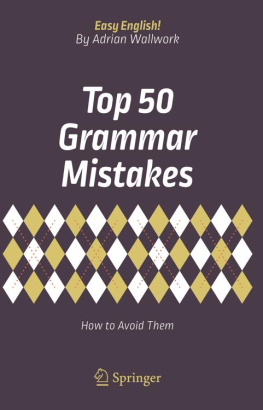
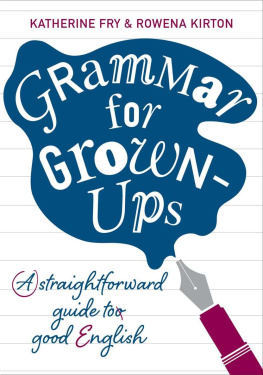

 Copyright 2018 by Tim Collins. All rights reserved. Printed in the United States of America. Except as permitted under the United States Copyright Act of 1976, no part of this publication may be reproduced or distributed in any form or by any means, or stored in a database or retrieval system, without the prior written permission of the publisher. ISBN: 978-1-26-001922-3
Copyright 2018 by Tim Collins. All rights reserved. Printed in the United States of America. Except as permitted under the United States Copyright Act of 1976, no part of this publication may be reproduced or distributed in any form or by any means, or stored in a database or retrieval system, without the prior written permission of the publisher. ISBN: 978-1-26-001922-3 Difficulty saying an English sound arises because the first language does not have such a sound.
Difficulty saying an English sound arises because the first language does not have such a sound.  . For maximum clarity, all errors are corrected, and each corrected version is presented with a
. For maximum clarity, all errors are corrected, and each corrected version is presented with a  .
.